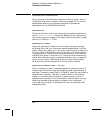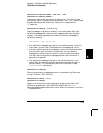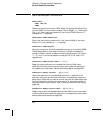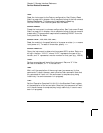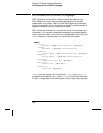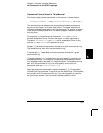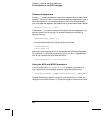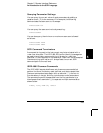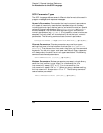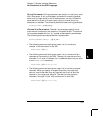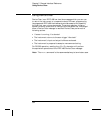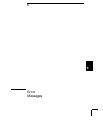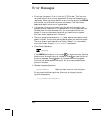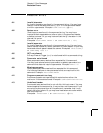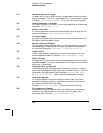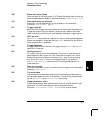
SCPI Parameter Types
The SCPI language defines several different data formats to be used in
program messages and response messages.
Numeric Parameters Commands that require numeric parameters
will accept all commonly used decimal representations of numbers
including optional signs, decimal points, and scientific notation. Special
values for numeric parameters like MINimum, MAXimum, and DEFault
are also accepted. You can also send engineering unit suffixes with
numeric parameters (e.g., M, K, or u). If only specific numeric values are
accepted, the instrument will automatically round the input numeric
parameters. The following command uses a numeric parameter:
VOLTage:DC:RANGe {<
range>|MINimum|MAXimum}[,(@<ch_list>)]
Discrete Parameters Discrete parameters are used to program
settings that have a limited number of values (like BUS, IMMediate,
EXTernal). They have a short form and a long form just like command
keywords. You can mix upper- and lower-case letters. Query responses
will always return the short form in all upper-case letters. The following
command uses discrete parameters:
UNIT:TEMPerature {C|F|K}[,(
@<ch_list>)]
Boolean Parameters Boolean parameters represent a single binary
condition that is either true or false. For a false condition, the
instrument will accept “
OFF” or “0”. For a true condition, the
instrument will accept “
ON” or “1”. When you query a boolean setting,
the instrument will always return “0” or “1”. The following command
uses a boolean parameter:
INPut:IMPedance:AUTO {OFF|ON}[,(
@<ch_list>)]
Chapter 5 Remote Interface Reference
An Introduction to the SCPI Language
300



